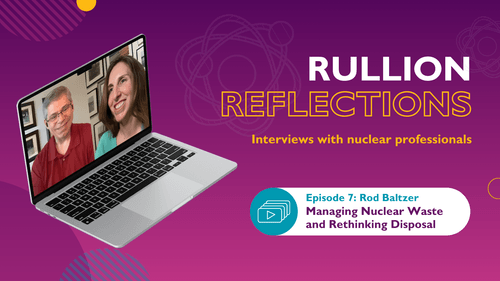Rullion Awarded the Driving Equal Opportunity Award for Large Companies by Alstom UK & Ireland
Rullion Awarded the Driving Equal Opportunity Award for Large Companies by Alstom UK & Ireland
This month (May 2025), Rullion has won Social and environmental impact of rail supply chain recognised in Alstom’s Supplier CSR awards in the UK and Ireland | Alstom. This accolade recognises our data-driven ED&I partnership in rail. This partnership combines aligned values with hands-on action to implement an effective inclusive hiring strategy. This recognition celebrates the power of aligned values, practical action, and a shared vision for the future of inclusive hiring.
With over 6,000 employees and 37 sites, Alstom is the UK and Ireland’s leading provider of new trains and train services. Beyond their rail expertise, they are champions of equity, diversity, and inclusion (ED&I) in the transport industry. These values resonate deeply with our team at Rullion.
As the industry navigates new technologies and changing workforce demographics, having flexible and innovative workforce solutions for industries like Rail and Transport, is essential to attracting, developing, and retaining top talent.
This award is more than a milestone for us. It celebrates the collaborative effort shaping a more representative workforce across critical infrastructure. Creating an inclusive workplace requires more than good intentions. It requires action.
Lindsay Harrison, Chief Customer Officer at Rullion:
“On stage at the award ceremony, I spoke about breaking down barriers and today I’m proud to see Rullion and Alstom doing exactly that, every day.”
Why This Award Matters
Winning Alstom UK & Ireland’s Driving Equal Opportunity Award demonstrates how our data-driven ED&I recruitment partnership delivers measurable impact on diversity in rail, setting a new standard for inclusive hiring pipelines.
From day one, our partnership with Alstom has been rooted in mutual trust and a shared belief that diverse teams create stronger businesses and better outcomes.
We are proud to work alongside Alstom because of their authentic, values-led approach to ED&I. Whether it is supporting the Women in Rail Awards, embedding inclusive behaviours at every level, or aligning their workforce with the communities they serve, they lead by example. Alstom’s belief that diversity is key to innovation and long-term success is something we live and breathe at Rullion as well.
That is what makes this award so meaningful. It recognises not just what we have done, but how we have done it together.
Monitoring with Purpose, Protecting Privacy
Understanding representation begins with the right data. However, how data is used matters just as much as what data is collected.
At Rullion, we track ED&I data for both permanent staff and contractors - covering gender, ethnicity, age, disability, sexual orientation and religion. To safeguard privacy, we group insights by function or business unit rather than individual job title. This approach uncovers trends without risking confidentiality.
We track ED&I data for both permanent staff and contractors, covering gender, ethnicity, age, disability, sexual orientation, and religion. To safeguard privacy, particularly in niche roles often held by only one or two individuals, we group insights by function, business unit, or client programme rather than individual job titles. This method ensures that the insights are useful while keeping identities anonymous.
This approach allows us to identify patterns, address gaps, and measure progress over time. It empowers us to act with intent while protecting the privacy of those we support.
As Liz, our ED&I Lead, puts it:
“Our strength lies in blending data-led insights with real empathy. This award proves that when we partner purposefully, we make lasting change.”
We apply the same rigorous standards internally. Recently, we introduced diversity monitoring across our recruitment processes, tracking candidate data from application to offer. This gives us a clear view of how inclusive our hiring journey is at every stage.
Already, we’re seeing actionable insights - from application rates to conversion patterns - that help us identify barriers and implement targeted improvements.
With clients, we go even further. Using our CRM system, we track ED&I data throughout the contractor lifecycle. For organisations like Alstom, we’ve developed bespoke Power BI dashboards that reveal real-time trends across gender identity, ethnicity, disability, and more. All data is anonymised and fully aggregated.
But this isn’t data for data’s sake.
We combine insights with quarterly reporting and practical recommendations, from inclusive attraction strategies to accessible job descriptions and interview support. It’s about making recruitment better for everyone.
A Tailored, Client-Centric ED&I Partnership Model
Our partnership with Alstom combines real-time diversity dashboards, quarterly data reviews and joint action plans - ensuring every rail project recruits talent that reflects the communities we serve.
Every client we work with has different ED&I goals. For some, it is about boosting gender diversity in technical roles. For others, it is about creating more pathways into leadership for underrepresented groups. That is why we never take a one-size-fits-all approach.
Instead, we align with each client’s specific reporting standards, terminology, and strategic aims, all while ensuring data handling remains ethical and GDPR-compliant.
With Alstom, that partnership model has come to life. From day one, we have worked together to build a data strategy that fits their operational needs and reflects their values. Real-time dashboards help track progress. Our recruitment insights shape decisions. Regular reviews help ensure progress stays on track.
That is what inclusive delivery looks like: collaborative, flexible, and grounded in real-world action.
Partnership in Practice: Collaborating With Alstom
What makes our partnership with Alstom stand out is its clarity of purpose. Together, we have taken steps that go beyond compliance. We shape recruitment strategies, remove barriers, and improve representation across their contractor population.
From creating real-time dashboards to tracking candidate demographics, suggesting tangible changes in hiring workflows, and proactively recommending inclusive attraction methods, it is a truly collaborative effort. It has had measurable impact.
We have seen improvements in application diversity, candidate progression, and feedback from underrepresented groups. We have worked together to open doors and keep them open.
We are not stopping here. Our partnership with Alstom is ongoing, evolving, and focused on what is next.
Meet Our ED&I Engine: The Rullion Musketeers
Inclusion starts at home. And at Rullion our ED&I Musketeers make inclusion part of everything we do.
Since 2021, this volunteer-led workstream has driven our internal ED&I strategy. From coordinating awareness days and designing training resources to gathering colleague feedback and driving cultural change, the Musketeers keep inclusion front and centre.
It is not about grand gestures. It is about sustained, everyday action that makes people feel seen, respected, and supported.
Here is what we have achieved so far:
-
In 2021 and 2022, we rolled out our first company-wide ED&I survey, launched the ED&I Resource Centre, and aligned monthly activity with national awareness days across race, gender, and disability.
-
In 2023 and 2024, we earned Disability Confident Level 2 status, reinforcing our commitment to accessible and inclusive work environments.
-
In 2024 and 2025, we focused on neurodiversity and social mobility, including dedicated campaigns, learning resources, and a more inclusive approach to internal recruitment.
These efforts feed directly into our ED&I 2025 Plan, which outlines clear goals across recruitment, communications, employee engagement, and external partnerships.
What’s Next for Rullion & The Rail Sector
Being recognised with the Driving Equal Opportunity Award by Alstom is a huge honour.
It shows what is possible when shared values and practical action come together. It reminds us that the work does not stop. There is still more to do, more to learn, and more barriers to break down.
We are proud of the journey so far and excited about what comes next, not just with Alstom but with every organisation that shares our vision of a more inclusive future.
Because inclusion is not a trend. It is the foundation for what comes next.
Gareth Smith, Client Services Manager - Alstom:
“Winning this award with Alstom shows that inclusive recruitment is not just a nice-to-have, it is necessary to drive productivity on every rail project we collaborate on.”
Ready to build a more inclusive, data-driven recruitment strategy?
Let us talk about how we can support your ED&I goals and help you create a workforce that reflects your values and communities.
Contact us today to start the conversation.





